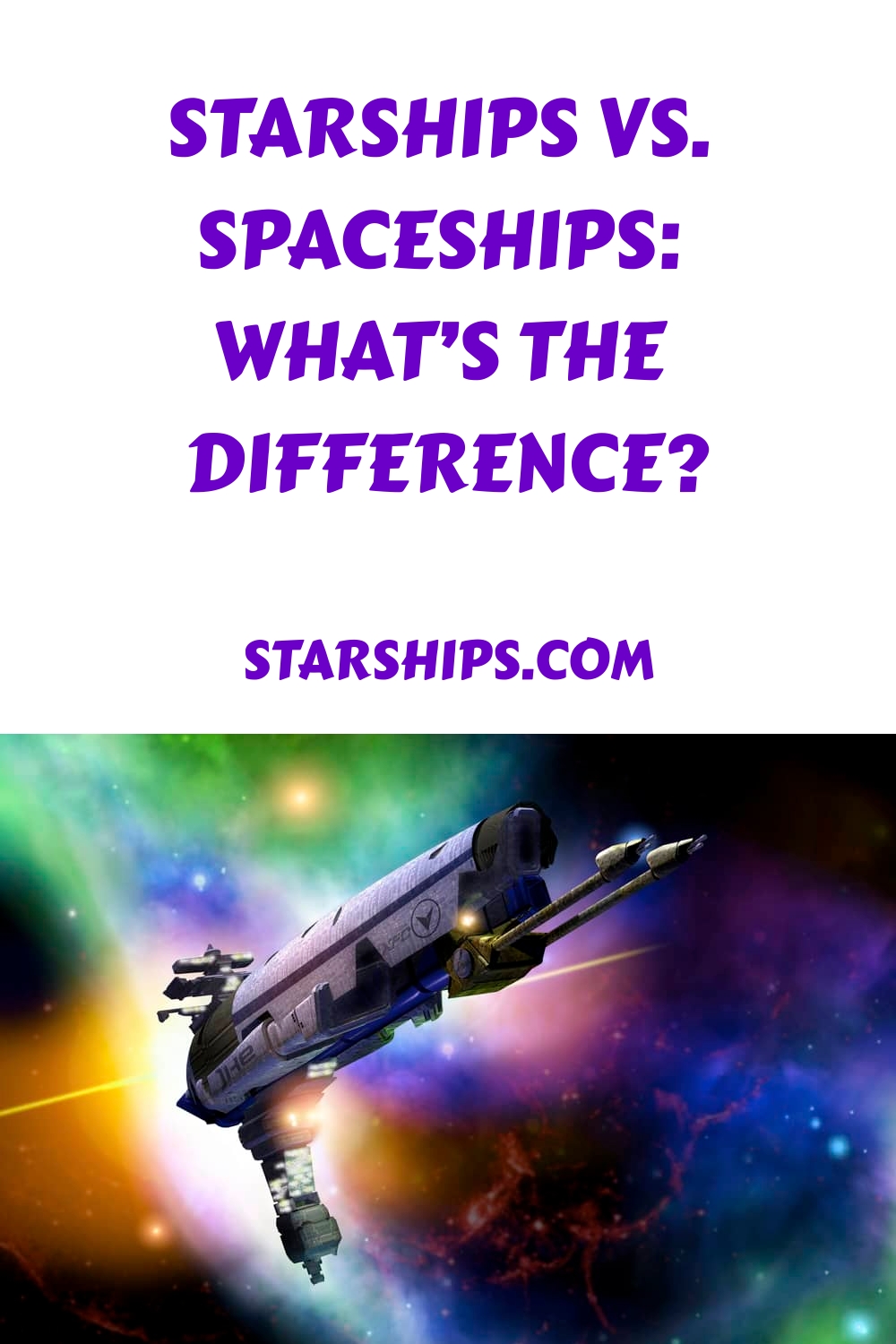You’ve probably heard about starships, spaceships, and other spacecraft in movies and the news. There’s a fine line drawn between the different self-propelled and manually driven vehicles that we use in space, so it’s hard to figure out the difference. Starships and spaceships are far from the same, but there are a few similarities.
The difference between starships vs. spaceships is that spaceships are flown throughout the solar system, whereas starships are made to go outside of it. Currently, starships are fiction, unless you consider the SpaceX Starship. However, this vehicle isn’t capable of flying out of the solar system.
Throughout this article, you’ll also learn the following information about starships and spaceships:
- Numerous differences between the two ships
- Pros and cons of both
- Current capabilities and futuristic expectations
- Examples of modern spaceships
What Are the Differences Between Spaceships and Starships?
Despite their similar names, spaceships and starships should be considered completely different from one another. It’s important to know the modern capabilities that we currently have, including the fact that no manned spacecraft has ever left the solar system.
Without further ado, let’s dive into the five main differences between spaceships and starships:
- Spaceships are real; starships aren’t. We don’t have any starships developed yet; They’re purely known to be found in fiction tales. That being said, there might be a bit of confusion since SpaceX has a Starship design. It’s made to fly manned crews to the Moon, Mars, and eventually, beyond.
- Starships can fly outside of the solar system. In the fiction stories that they’re found in, they can go to other solar systems and even outside the galaxy. There aren’t very many spaceships that can do much more than fly to the Moon. In fact, no man has set foot on Mars, yet.
- Spaceships often have a destination, whereas starships can be a never-ending journey. When crews fly spaceships to the Moon, they have set arrival and departure dates. On the other hand, starships often explore the galaxies to find new, habitable land or to accomplish other tasks.
- Starships are always manned by a crew, but spaceships can either have a crew or be operated by robots. Thanks to modern technology, scientists and engineers can now fly spaceships to land on the Moon and Mars. One such example was the InSight Mars Lander launched by NASA in 2018.
- Many types of spaceships orbit the planet, whereas starships aren’t designed to hover in orbit. Instead, they fly in and out of planets, solar systems, and galaxies. Technically speaking, the International Space Station is a spaceship that’s forever in orbit, so it wouldn’t be called a starship.
As you can see, there are plenty of differences to learn about when it comes to spaceships and starships. They’re both designed to explore and follow numerous missions, but spaceships are limited in their traveling distance.
If you want to learn more about the advantages and disadvantages of both spacecraft, proceed to the next section.
Spaceships vs. Starships
Spaceships and starships are commonly referred to as one another, but they’re far from the same. You now know that starships aren’t real yet, but spaceships have been developed for many decades.
Assuming both ships are real for this hypothetical comparison, let’s review the pros and cons of each:
Pros of Starships
- Starships can go forever. Again, we’re speaking hypothetically, but starships don’t have limits. They can carry an enormous amount of fuel. In some stories, they’re capable of drawing fuel sources from nearby planets when they land, providing them with enough fuel for a never-ending adventure.
- They usually have much more room inside the ship. They’re always moving and traveling with manned crews, so it’s no wonder that the inside often has more living space. This addition also includes more room for food, entertainment, and other convenient amenities.
- Finally, starships go much faster than spaceships. Since they’re supposed to go outside of the solar system, higher speeds are required. At the rate of current real-life spaceships, it would take decades to leave the solar system. Starships exceed such limitations to propel themselves throughout the galaxy and beyond.
Cons of Starships
- The biggest and most obvious con of all is that starships simply aren’t non-fiction. They’re only found in popular television shows and books. As the community of SciFi on Stack Exchange states, starships can’t truly be compared to spaceships since one is real and the other is fake.
- If a starship was developed, it would cost absurd amounts of money. It’d likely require crowdfunding, tax increases, and all sorts of donations from corporations and individuals around the world. Furthermore, we wouldn’t see the results for well over a decade when the initial tests were conducted.
Pros of Spaceships
- Spaceships can stay in orbit, reducing the amount of fuel they use by taking advantage of gravity. For example, the International Space Station orbits the Earth at a perfect speed to prevent it from drifting away or falling too close to the atmosphere. All in all, it’s the most fuel-efficient method of space travel to date.
- There’s no need for a crew in many modern forms of spaceships. They can be flown from Earth, reducing the supplies needed to bring it to and from a planet. It also allows us to land on Mars without sending additional oxygen tanks, food, and water. Scientists can collect samples from another planet without leaving the lab.
- Spaceships allow us to test the potential of starships if they’re ever developed. We now know how zero gravity works, what types of food work best in space, pressure changes, and many other challenges that used to be unknown. They’re a great testing vessel that also promotes future discoveries.
Cons of Spaceships
- Spaceships have one major limitation: They can’t leave the solar system. Manned crews haven’t gone beyond the Moon, much less any other planet or galaxy. In an age where it seems that we’ve brought technology to a new level, space travel has proven to be a major challenge. This is mostly due to the lack of enough fuel, slow speeds, and willing participants.
- Spaceships cost quite a bit of money. Even though we can use gravity to save fuel and create an efficient space flight source, the production costs are sky-high. According to Space, Nasa’s launches can potentially cost upwards of $500 million. That’s a whole lot of money for possibly catching fire or not making any discoveries.
Both spacecraft have their own issues and benefits, but it’s important to remember that we’re always moving forward.
When the first crew landed on the Moon, they used computers that weren’t even as strong as modern laptops. Who knows where technological advancements will take space travel in a decade, century, or millennium?
Conclusion
When you compare realistic spaceships to fictional starships, it’s easy to see why we reach for the stars. Starships have far fewer limitations, but they’re not able to be produced quite yet. However, it’s not a bad thing to be stuck with spaceships. They’re highly functional, and they teach us more than enough about space exploration.
Here’s a quick rundown of the post:
- Spaceships are real and used for several decades.
- Starships aren’t real, but they’re found in many fictional stories.
- A spaceship can use gravity to maintain fuel efficiency.
- Starships can travel throughout solar systems and galaxies.
- Spaceships are limited to a single solar system; Frequently, less than that.
- Constant advancements make it possible to develop starships in the near future.
Sources
- NASA – International Space Station
- SciFi – Stack Exchange – Is there a difference between a spaceship and a starship?
- SpaceX – Starship





Leave a comment
You must be logged in to post a comment.